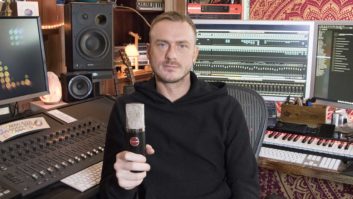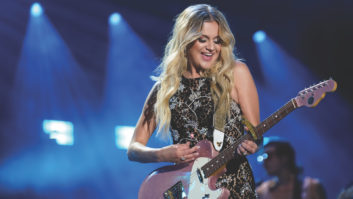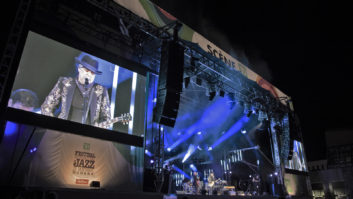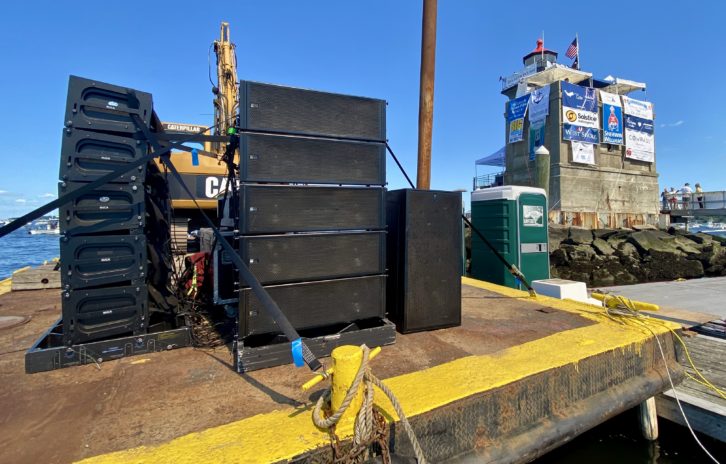
Huntington, NY (September 7, 2021)—Boats and music have always gone together, and what’s better than listening to tunes when you’re out on the water? Well, what if those tunes were played live? That’s what happened September 4 at the Huntington Lighthouse Music Festival, where seven bands rocked on the roof of a historic lighthouse an hour outside of New York City. Despite the weird location, they weren’t alone—an estimated 1,650 vessels surrounded the 40×40-foot island to hear reggae, rock and boatloads of Buffett.
On paper, the all-day festival sounds like a crazy idea. The lighthouse doesn’t have reliable power for a PA, the mix position is three stories below the bands on the opposite side of the building, and everything from consoles to speakers to musicians has to be brought in by boat—and then taken up docks, gangplanks, steps and a spiral staircase to the roof. Despite all those hurdles, 2021 marked the 12th edition of the fundraising event, presented by the Huntington Lighthouse Preservation Society.
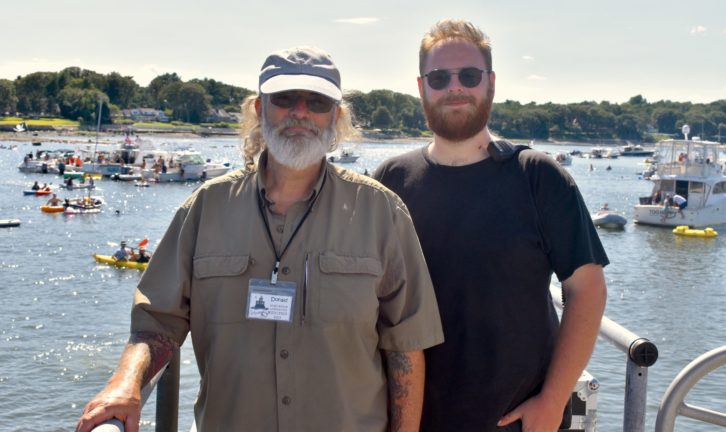
Involved since the festival’s inception in the mid-2000s, HDH Davidson Entertainment once again handled sound, lights, livestreaming and booking. “It was a jazz fest the first year,” recalled HDH’s technical director, Donald Davidson. “A friend of mine who was on the lighthouse committee said, ‘Who’s bringing the PA?’ and someone said, ‘The band brings that, right?’ She called me up, talked me into it and brought me out the next day. There was no phone signal back then, and I couldn’t imagine how we were going to get power. I brought out everything I had, even stuff I had retired. I had amp racks overheating, crossovers on fire…it was bad. Second year, I borrowed everything I could from people I knew; that was no good. Third year, we started renting Meyer Sound UPA-1s and discovered they could handle the bad power, and that was the key; whether it was low, high or fluctuating, they kept going.”
Over the nine Huntington Lighthouse Music Fests since then, the evolution has continued. A few years in, the audio team realized vibrations from the growing ground-stacked PA and subs were probably hurting the historic lighthouse, particularly the crumbling foundation that they were raising funds for. “The whole building was shaking when we had the festival,” laughed Davidson. “First, we tried platforms of tires and plywood under the PA; that worked a little bit. It took 10 years to raise the $1 million to fix the foundation and once they started, there were construction barges moored here. We realized—’We need a barge for the PA!’”
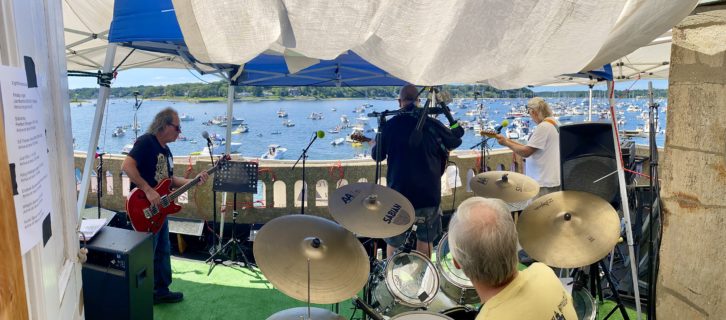
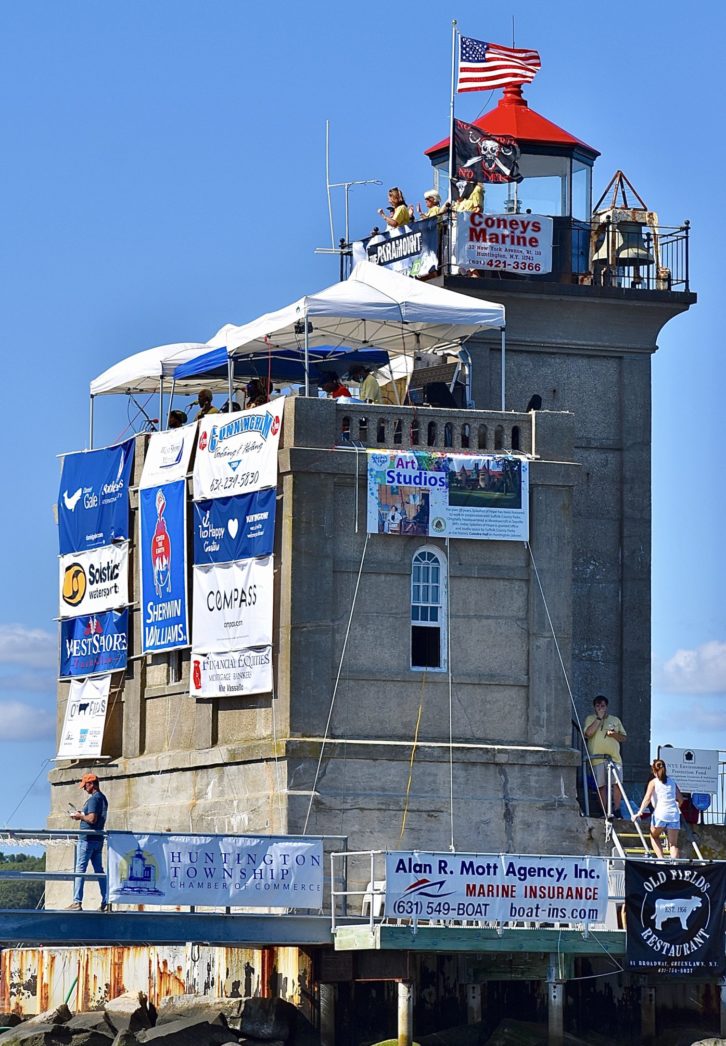
That PA has changed over time, too. This year, Designatronix (Ronkonkoma, NY) provided gear for a system design largely spec’d by second-generation audio pro Harley Davidson. That system did more than bring sound to the marine masses, however. Since boaters wanted to hear the music, astute speaker placement helped get boats to drop anchor inside specially designated areas, ensuring that open channels were maintained for vessels to pass through.
The main PA was comprised of two barge-stacked arrays of five Meyer Sound MICA array elements, each supplemented by a 700-HP subwoofer, all placed at a 90° angle to each other. “They cover 180° with a big dead node in the center—which is fine because there’s rocks, so nobody’s there,” said Harley Davidson. “We need a buffer zone around the island so the Coast Guard can get in and out if needed; with the MICAs doing 112 dB five feet away from the moorings, it helps keep the kayakers back a bit. We used to get people driving past in the channel saying ‘I can’t hear it’—well of course, since the speakers were on the other side of the lighthouse—so now we’ve started adding auxiliary stacks of four Melodies in places.” The entire system drew power from a fleet of generators overseen by master electrician Zach Parker of ZeeMac Services, making the spotty power a thing of the past.
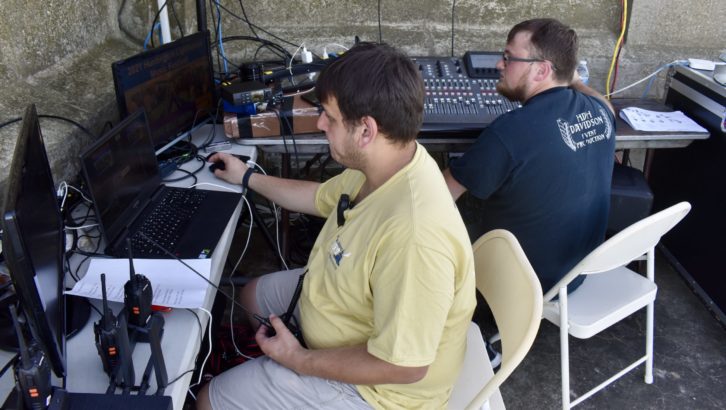
The Livestream/FOH mix position was located under a canopy at the base of the Huntington Lighthouse. There, Andrew Schild wore two hats as he coordinated festival volunteers and oversaw a Facebook livestream based around HDMI output from two GoPro cameras hung above the bands. That footage was teamed with an audio feed of FOH engineer Ryan Damico’s mono house mix, created on a Behringer x32 console. Most bands required fewer than 20 inputs, said Damico, which was fine with him as he had his hands full, mixing far behind the PA while the stage was three stories up on the other side of the lighthouse. “It makes for some interesting slapback,” he chuckled.
Lollapalooza Brings Back Live Music Festivals – A Mix Photo Essay
The unusual mixing position was a necessity since there was barely room for the bands themselves on the roof. Nonetheless, tucked into the corner of the roof stage area, Heather Bey mixed monitors on another x32 console, providing mixes to five Meyer Sound Melodie array boxes used as monitors due to their small footprints. Miking was handled with a bevy of Sennheiser and Audix mics on drums, DIs on guitar amps and keys, and Shure SM58s used to capture vocals.
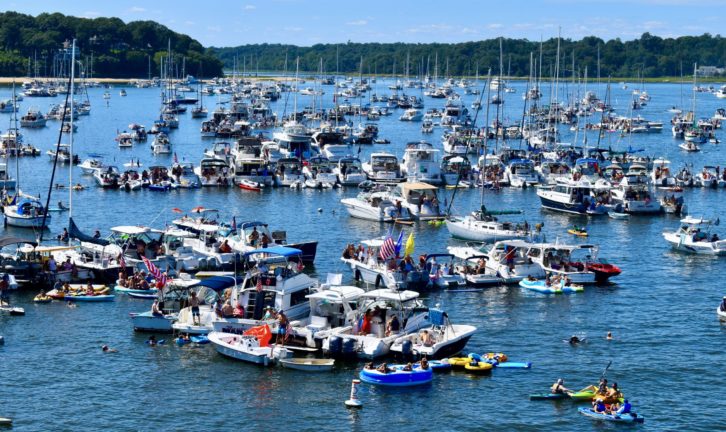
Between acts, organizers from the Preservation Society encouraged boaters to surrender the contents of their wallets to volunteer “pirates” that went boat-to-boat in zodiac rafts—though in a nod to the modern age, the organization also took Venmo. The festival is the Preservation Society’s main fundraiser, and the money is crucial for maintaining the aging lighthouse, which has guided boaters along Long Island’s Gold Coast since 1912. Resembling a small castle thanks to its Beaux Art-style architecture, the solitary building has become iconic in the region, easily seen from the sprawling Gatsby-like mansions that dot the shoreline and the roiling waters beyond. When the Coast Guard announced plans in 1985 to replace the then-crumbling castle with a generic metal tower, the Huntington Lighthouse Preservation Society was hastily formed to save the historic lighthouse—and won. Today, while the Coast Guard still operates the automated beacon, the volunteer organization owns and maintains everything else, and according to vice president Deanna Glassman, the lengthy to-do list includes the installation of new windows, a new dock and 350 tons of new rip-rap—the boulders that surround lighthouses, keeping the waters at bay.
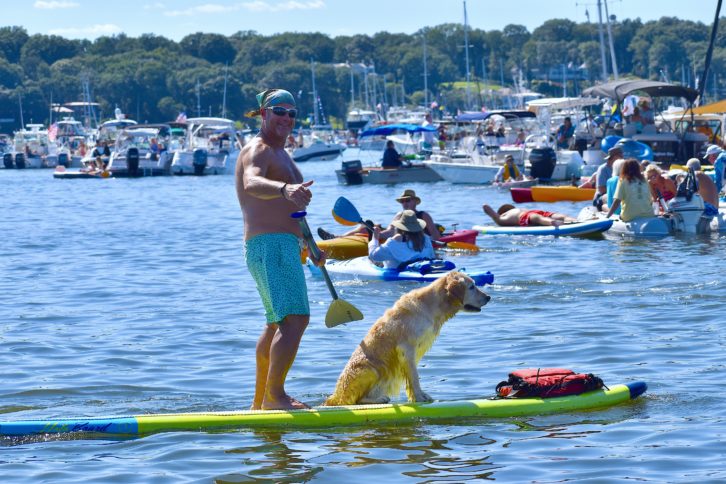
Blessed with perfect weather, the 2021 festival was a hit with boaters and bands alike. “We have a lot of repeat groups, but the same thing happens with every act the first time they play here,” said Donald Davidson. “The concept doesn’t really sink in until the day of the show. They bring their stuff to the dock and OK, going on a boat’s kind of cool. Then they pull up to the lighthouse and they start to get it. By the time they get out on the roof and see all those boats, they step up to the mic and go, ‘This is the coolest gig!’”


